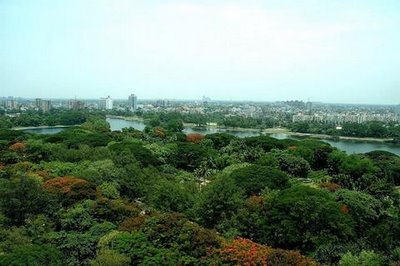
There are a number of very serious threats to the long term health and well-being of Calcutta.
The city is sprawling eastwards over the sensitive wetlands (which are part of the Sundarban deltaic eco-system). For over a decade and a half now, the impact of this has been felt on the city’s drainage system. Within the city, there are severe disparities and inequities in provision of civic services. Maintenance and development of service infrastructure is hostage to the free-riding and pillaging by the powerful and rich.
Environmental health is consequently seriously threatened by water-borne and malarial diseases. Lack of access to adequate supplies of drinking water, which is compounded by inadequate sanitation – this is the principal environmental problem for Calcutta. Municipal statistics from Howrah suggest that infant mortality rates in slums are significantly higher than that in non-slum areas. A third of the metropolitan population lives in slum settlements, where the conditions are most degraded. In some areas, service latrines are used by over a hundred persons.
The city as a whole becomes a zone of conflict and violence, between the haves and the have-nots, with the middle-classes getting it from both sides. The degraded and poverty-ridden slums of the city are like subterranean boiler-rooms producing crime and riots, which can make city life nightmarish.
Frontally addressing such questions, with a view to humane transformation, is the greatest challenge facing the metropolis of Calcutta.


No comments:
Post a Comment